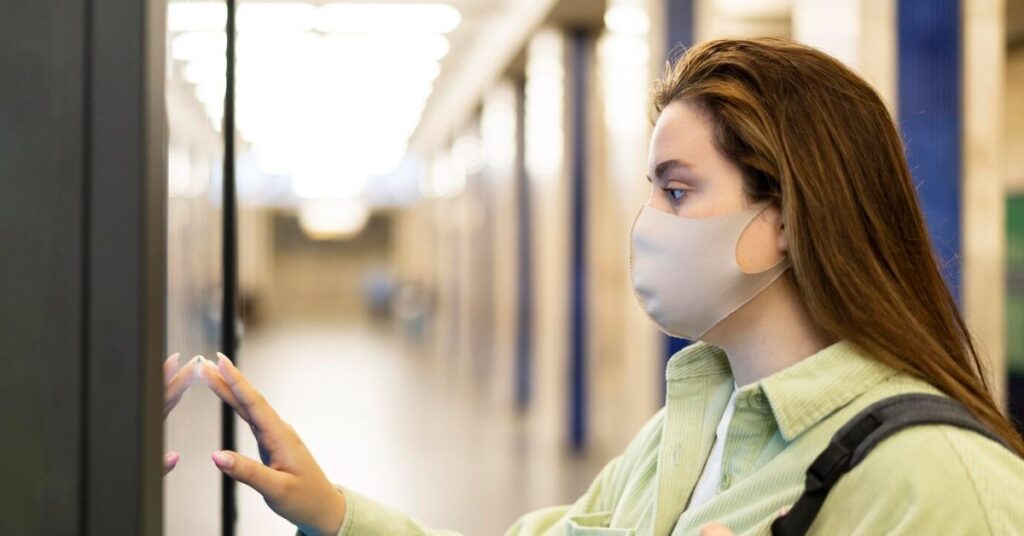What is a Biometric Attendance Monitoring System?
In today’s fast-paced world, technology continues to evolve, bringing new ways to improve efficiency and accuracy in various sectors. One such area that has greatly benefited from advancements in technology is the education sector. Specifically, biometric attendance systems have revolutionized how schools monitor student attendance, ensuring more reliable, accurate, and time-efficient methods. These systems employ cutting-edge technologies like face recognition, fingerprint recognition, and iris recognition to track student attendance with minimal human intervention, reducing errors and fraud.
What is a Biometric Attendance Monitoring System?
A biometric attendance monitoring system is an advanced solution that uses biometric features of individuals, such as their fingerprints, face patterns, or iris patterns, to track and record attendance. Unlike traditional attendance methods, such as manual roll calls or RFID cards, biometric systems offer a more secure and reliable way to monitor attendance.
In a biometric attendance system, students are required to register their biometric data, which is then stored in the system’s database. When they arrive at school, they use their registered biometric feature to mark their attendance. The system processes the data in real-time, comparing it against the stored records, and automatically logs the student’s attendance. This method significantly reduces the risk of proxy attendance, where one student marks another’s presence, which is a common issue with manual systems.
How Biometric Systems Work: Face, Fingerprint, and Iris Recognition
Biometric attendance systems operate through different modes of biometric verification, including face recognition, fingerprint recognition, and iris recognition. Each of these methods relies on distinct features to identify individuals.
1. Face Recognition
Face recognition technology works by analyzing the unique features of a person’s face, such as the distance between the eyes, nose, and mouth. When a student approaches the attendance terminal, the system captures an image of their face, processes it, and matches it against the pre-registered data to verify their identity. This technology is highly efficient and contactless, offering convenience and hygiene, particularly important in the post-pandemic era.
2. Fingerprint Recognition
Fingerprint recognition is one of the most commonly used biometric methods. Every individual’s fingerprint is unique, making it an effective way to ensure accurate attendance recording. In a school setting, a student places their finger on a scanner, which reads the fingerprint and compares it to the stored data in the system. If a match is found, the attendance is automatically logged. Fingerprint scanners are reliable and work quickly, making them ideal for environments like schools where large numbers of students are involved.
3. Iris Recognition
Iris recognition technology uses the unique patterns in the iris (the colored part of the eye) to identify individuals. The process involves a high-resolution camera capturing an image of the student’s eye, which is then analyzed and compared to stored iris data. Iris recognition offers high levels of accuracy and is less prone to errors due to environmental conditions or wear-and-tear compared to fingerprints. This method is also contactless, making it suitable for a variety of educational environments.
Advantages of Using Biometric Attendance Systems in Schools
Implementing biometric attendance monitoring systems offers numerous benefits to schools, including improved accuracy, time-saving, and enhanced security. Below are some of the key advantages:
1. Accurate and Reliable Attendance Tracking
Traditional attendance systems, such as manual roll calls or paper-based records, are prone to human errors and can be easily manipulated by students marking proxies. Biometric attendance systems eliminate this issue by ensuring that only the registered student can mark their attendance using their unique biometric data. This results in more accurate attendance records, giving teachers and administrators a true representation of student attendance.
2. Increased Security and Fraud Prevention
One of the most significant advantages of biometric systems is the enhanced security they offer. Since biometric features like fingerprints, face patterns, and iris scans are unique to each individual, it is impossible for one student to fraudulently mark another’s attendance. This drastically reduces the chances of cheating or attendance fraud, which can undermine the integrity of school operations.
3. Time Efficiency
In traditional attendance systems, roll calls can be time-consuming, especially in larger classrooms with many students. Biometric systems, on the other hand, automate the attendance process, significantly reducing the time spent on this task. Students simply have to scan their fingerprint, face, or iris, and their attendance is automatically recorded within seconds. This enables teachers to focus more on teaching and less on administrative tasks, improving overall classroom efficiency.
4. Contactless and Hygienic
In the wake of the COVID-19 pandemic, hygiene and safety have become top priorities for educational institutions. Biometric systems such as face recognition and iris scanning are contactless, meaning students don’t have to physically touch any equipment, which helps minimize the spread of germs and viruses. This feature is especially important in a school environment where maintaining hygiene is crucial for students’ health and safety.
5. Automated and Real-time Data
With biometric systems, attendance records are automatically updated in real time. This ensures that the data is immediately available for analysis, reducing the need for manual data entry or corrections. Administrators can instantly access attendance reports, track patterns in student behavior, and identify students who are frequently absent or late. This level of data automation simplifies attendance management and helps school staff take timely action if required.
6. Ease of Integration with Other Systems
Modern biometric systems can easily integrate with other school management software. This means that attendance data can be synced with academic performance records, student health databases, and other relevant systems. This integration helps create a more seamless and efficient management system, providing school administrators with a holistic view of each student’s performance, attendance, and overall well-being.
7. Cost-Effective in the Long Run
While the initial setup cost for biometric attendance systems can be higher than traditional methods, the long-term benefits outweigh the investment. The time saved, the elimination of manual processes, and the reduction in fraud and errors contribute to a more efficient school system. Additionally, automated systems reduce the need for additional staff to manage attendance, which can further reduce operational costs in the long run.
Why Schools Should Adopt Biometric Attendance Systems
As the world continues to embrace digital transformation, schools must keep up with the times to ensure they are providing the best possible learning environment for students. Biometric attendance systems are one of the most effective ways to modernize attendance tracking, enhancing security, accuracy, and efficiency. By eliminating the problems associated with traditional methods, schools can create a more streamlined and effective system for monitoring attendance and improving overall student management.
For more information on how biometric systems can be utilized in schools, check out this detailed guide on Biometric School Attendance Monitoring Systems.
For a comprehensive overview of NCheck’s biometric solutions, visit NCheck.
FAQs
- What is a biometric attendance system?
A biometric attendance system is a technology-based solution that uses unique physical characteristics, such as fingerprints, facial features, or iris patterns, to identify individuals and track their attendance. It is an accurate, secure, and efficient way to monitor student presence in schools.
- How does face recognition work in biometric attendance systems?
Face recognition in biometric attendance systems works by capturing a student’s facial features and comparing them to pre-registered data in the system. The system uses these unique features to verify the student’s identity and mark their attendance.
- Are biometric attendance systems secure?
Yes, biometric attendance systems are highly secure. Since biometric features like fingerprints and facial patterns are unique to each individual, it is virtually impossible for one student to mark another’s attendance. This reduces the risk of fraud and ensures accurate attendance records.
- What are the advantages of using a biometric attendance system in schools?
Biometric attendance systems offer various advantages, including improved accuracy, time-saving, increased security, contactless operation, and easy integration with other school management systems. They also help prevent fraud and streamline the attendance process.
- Is biometric attendance monitoring cost-effective for schools?
While the initial setup cost may be higher than traditional methods, biometric attendance systems are cost-effective in the long run. They save time, reduce administrative errors, and minimize the need for additional staff to manage attendance, making them a worthwhile investment for schools.







